Fall Events Round-Up!
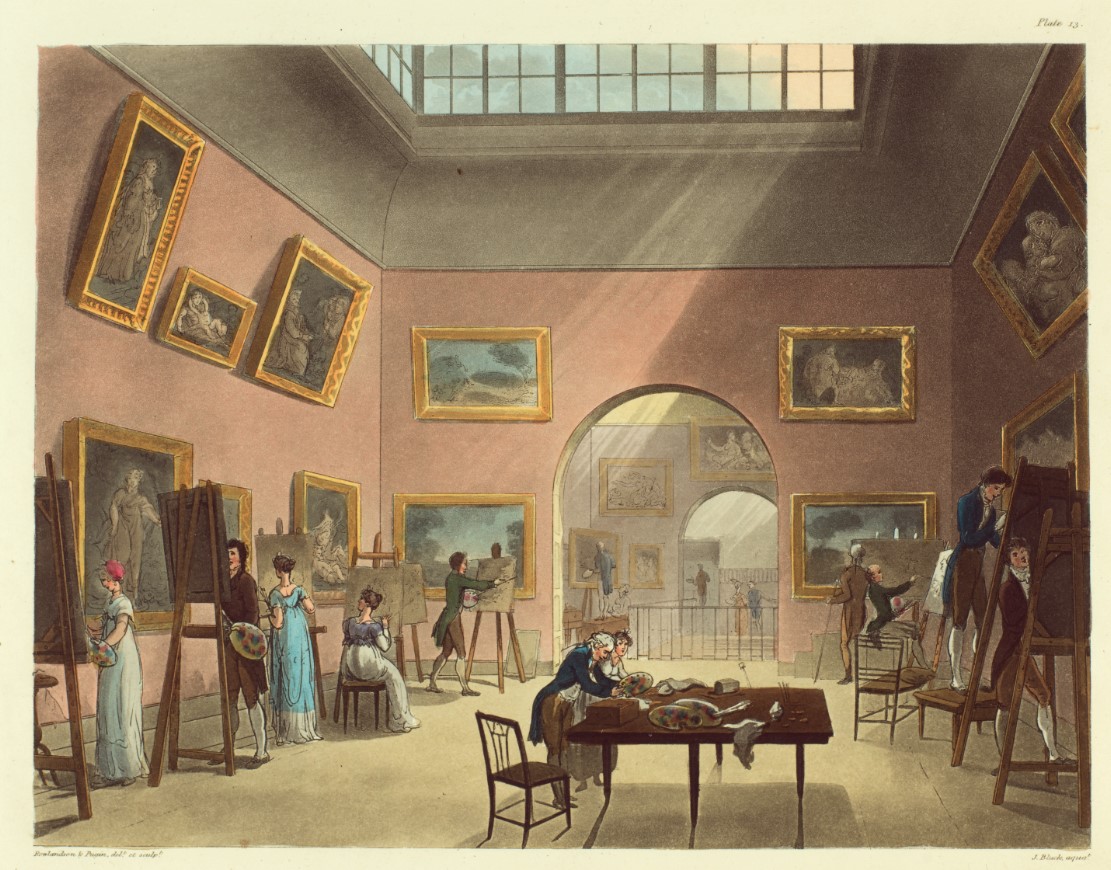
Thomas Rowlandson and Augustus Pugin, The British Institution, from Rudolph Ackermann, The Microcosm of London; or, London in Miniature (London: Ackermann, 1808), volume 1, plate 13, etching with watercolor, 23.3 x 27.5 cm. | The Huntington Library, Art Museum, and Botanical Gardens.
Where did September go? Well, it you were at the recent conference at the Huntington Library, it went to thinking about “Paintings, Peepshows, and Porcupines,” among others, on display at exhibitions in London between 1775-1851. As conference organizers Catherine Roach and Jordan Bear noted, “For visitors to present-day art museums, in which every individual work of art on display is elevated into the realm of the sacred, the exhibition of works of art in the late 18th and early 19th centuries can seem a bewildering jumble. Paintings of great ambition were embedded in exhibitionary landscapes consisting of the richest imaginable array of artifacts, environments, and living creatures. And these diverse displays were not consumed in isolation.” This topic provided a thoughtful pendant to the issues we address on “Home Subjects,” where paintings live with interior decoration, family possessions, and the sights, smells, and sounds of daily life as lived in the home. Presenters turned their attention to commercial public exhibitions rather than domestic display, but the idea of the domestic nevertheless permeated the event. We look forward to continuing the conversation!
The fall also kicks off academic conference season. The College Art Association will soon announce its conference program for February 2024 in Chicago (bring your mittens!), while the North American Victorian Studies Association will meet in Bloomington, Indiana in November. So far, there is nothing especially “home subjects-y” on those horizons, but we’ll keep you posted. Yet topics near and dear to our hearts and minds will be foregrounded in a number of events that offer an opportunity for more in-depth investigation, for close looking at works of art, for the consideration of the family as an artistic network, and for the ways in which those networks expand in imperial and global contexts.
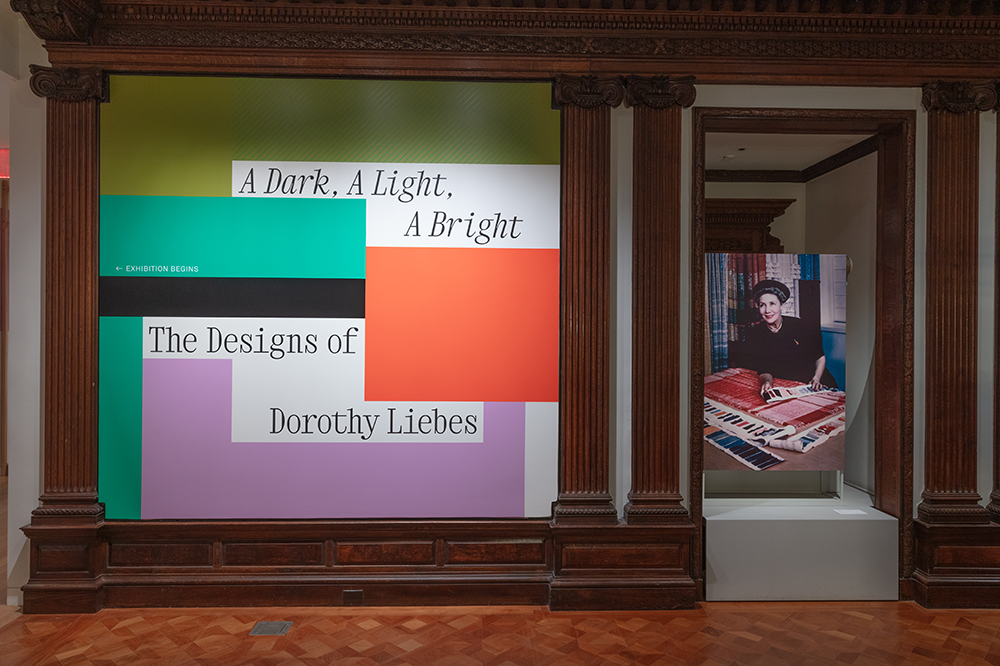
A Dark, A Light, A Bright: The Designs of Dorothy Liebes is the first monographic exhibition in more than 50 years on designer and weaver Dorothy Liebes (1897–1972). Cooper Hewitt Smithsonian Design Museum, New York.
The Cooper-Hewitt Smithsonian Design Museum in New York focuses on the work of Dorothy Liebes this fall, with the exhibition “A Dark, A Light, A Bright: The Designs of Dorothy Liebes.” The show reveals the range and importance of her textile and design work for films, airlines, and hotels, among others. She collaborated with architects Frank Lloyd Wright, Henry Dreyfuss, and Donald Desky and brands like Lurex and DuPont as a textile designer. Of particular interest to readers of “Home Subjects” are Liebes’s forays into interior design, especially her collaborations with important mid-century fashion designers Pauline Trigère, Adrian, Clare Potter and Bonnie Cashin. Liebes told Potter to embrace “whameroo” color, declaring “Don’t be afraid of color. Color is heady stuff, and the more one lives with it (as the 20th century man does), the more one can digest. After all, it isn’t the color, but the combination of colors and values.” As the exhibition suggests, we can thank Dorothy Liebes for the brightly colored throw pillows (“toss pillows“)that add a pop of color to any sofa.
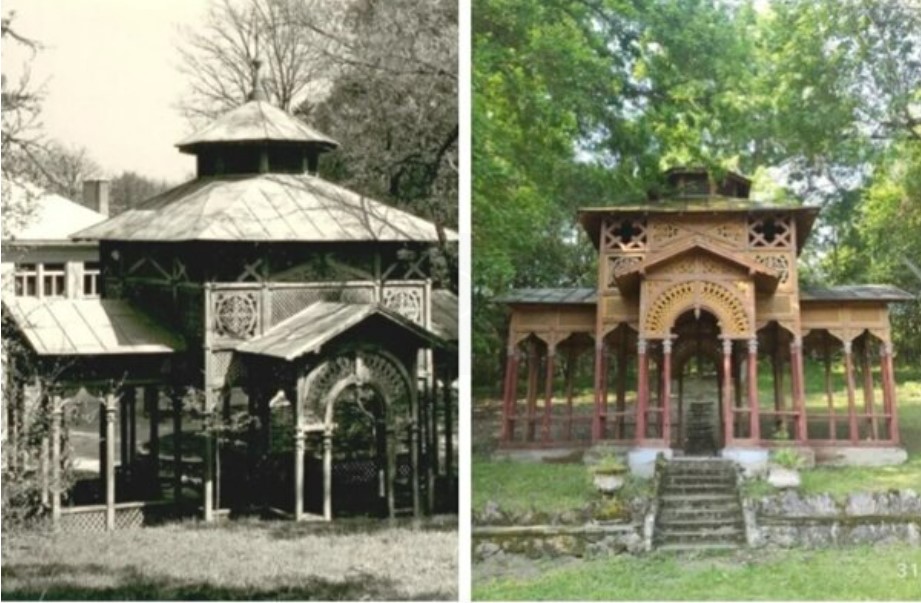
“Then” (left) and “Now” (right) for the pavilion made in 1885 and presented at a national exhibition held in Budapest under the auspices of Crown Prince Rudolph, now in the spa town of Santovka’s pavilion. (Source: KPÚ Nitra and Village of Santovka)
The discussion of cushions and divans will expand outward at the upcoming conference “Interiors Reconfigured: Changing Materiality and Craftsmanship in the Decorative Arts of the Middle East and North Africa, 18th–20th Centuries” at the Vitrocentre Romont, in Switzerland, November 3-4, 2023. As the organizers note, “the international conference is dedicated to the decorative arts of the Middle East and North Africa with a special focus on material aspects and local practices. In the course of profound changes since the 18th century, local tastes and craftmanship began to mutate under Ottoman and Western influence. The conference will address these changes and emphasize the growing importance of material-based analysis in the field of Middle Eastern and Maghrebi décors.” Many of the presentations address concerns central to “Home Subjects” from the domestic interior as a space of encounter “Cairene Interiors as Dynamic Spaces” (Mercedes Volait, CNRS/InVisu) to the idea of exhibiting domesticity, as in “František Schmoranz in Budapest: Reconstructing the Interior of the Oriental Pavilion at the 1885 National Exhibition in Budapest (Péter T. Nagy, Qatar Museums, Doha and Ajla Bajramović, University of Vienna). We hope to feature more about this event in a future post.
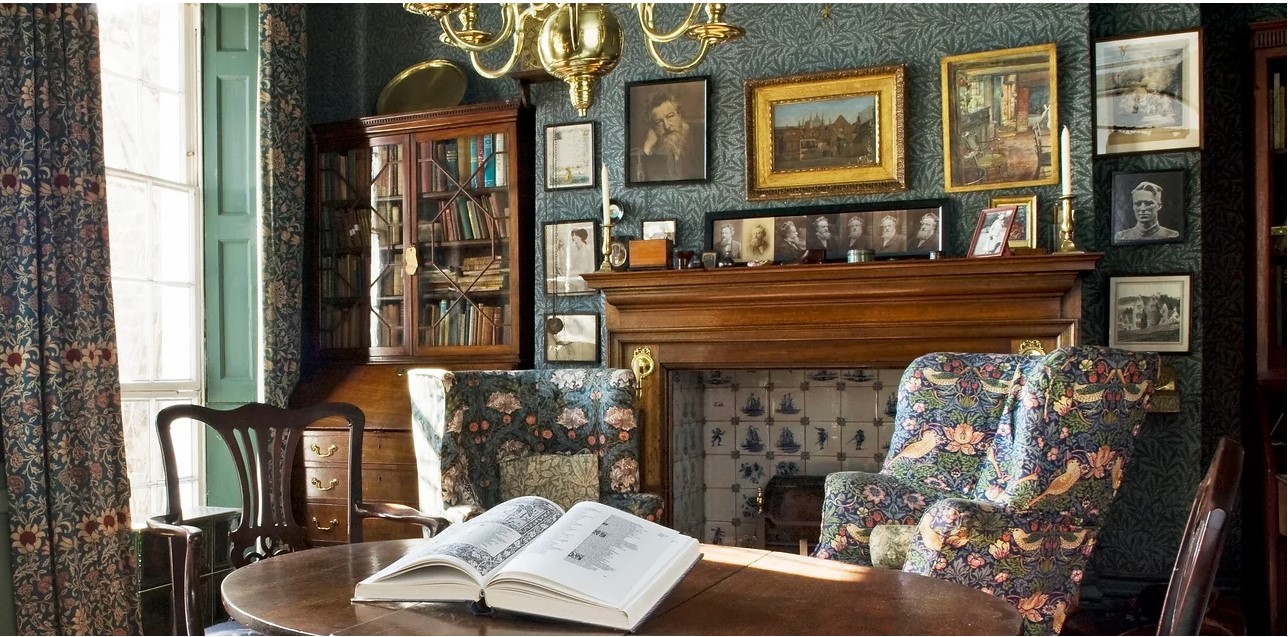
The dining room at Emery Walker’s House, preserved by his daughter Dorothy Walker, The Emery Walker Trust, Emery Walker’s House, 7 Hammersmith Terrace, London.
It wouldn’t be “Home Subjects” without the Pre-Raphaelites and the Arts and Crafts movement to round out this round up. First, the William Morris Society in the UK will be hosting an online talk by Dr. Imogen Hart, “Dorothy Walker & May Morris at Hammersmith Terrace and Kelmscott Manor” on November 14, 2023. In this talk, Dr. Hart will “compare May Morris and Dorothy Walker as preservers and curators of their homes, exploring how the legacies of the Arts and Crafts movement are shaped by house museums such as Kelmscott Manor and Emery Walker’s House.” We will feature a more in-depth look at this topic by Dr. Hart in a future post. In the meantime, tickets are available for purchase here.
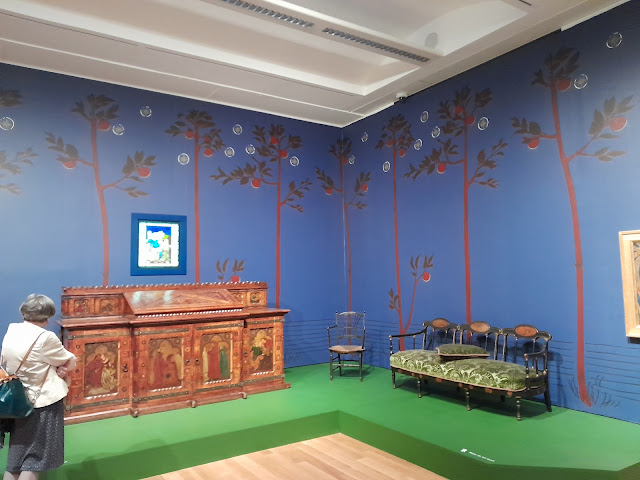
Installation view of “The Rossettis” exhibition when displayed at Tate Britain, with “King René’s Honeymoon Cabinet” c. 1861.
Emery Walker has a study of Jane Morris by Dante Gabriel Rossetti next to his fireplace (as seen in the image of his dining room, just below and to the left of William Morris). Visitors to “The Rossettis” at the Delaware Museum of Art can lean more about this iconic family and the interconnected worlds of art, literature, design, and politics through the exhibition, which opens on October 21! As the museum notes, “The exhibition explores how the Rossettis led a progressive counterculture before, through, and beyond the Pre-Raphaelite years, drawing on the past to reinvent art, politics, and relationships for their fast-changing modern world. The public is still fascinated by myths of Dante Gabriel’s intense relationships with fellow Pre-Raphaelites William Holman Hunt and John Everett Millais, and his models Fanny Cornforth and Jane Morris. The exhibition will engage visitors both familiar with and new to the Pre-Raphaelites with fresh insights that address contemporary debates about romance, class, sex, and gender.” When the show appeared at Tate Britain, there was a major gallery devoted to the Rossetti interiors and their decorative collaborations with William Morris, Edward Burne-Jones, and others.
And thus concludes our fall round-up! Happy viewing, visiting, listening, and learning.